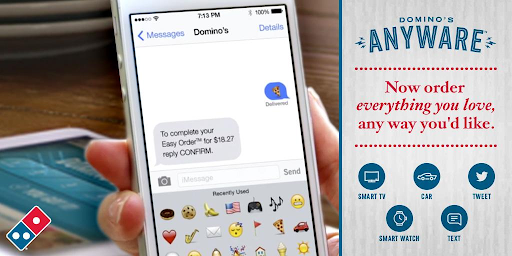How to Leverage Conversational Marketing for Better Customer Experience

Let's say you have a question for a brand that you're interested in, then you have to email them and wait for days just to get the template-based answer. Would you still be interested? Most likely not.
In today's face-paced digital world, customers want so much more than quick responses. They also demand more personal and engaging interactions with brands. That said, a study conducted by PwC found that over 64% of U.S. consumers and 59% of all consumers feel that brands have lost touch with the human element of customer experience.
This is where conversational marketing comes in handy. With this type of marketing, it would be much easier for you to create a more authentic and meaningful interaction by providing real-time feedback.
We'll get more in-depth about conversational marketing and how you can utilize it to its full potential. Let's dive in!
What Is Conversational Marketing?
Simply put, conversational marketing is the art of telling your brand's story through human language. It provides your customers a 1:1 interaction with your brand.
You can say that it is a way for you to reach out and build relationships with them by delivering useful information, engaging them in conversations, answering their questions immediately (and not days after they're being sent), providing support when it's needed most, etc.
Conversational marketing is so much more than providing real-time interaction with your customers, though. It's also about "being there" whenever they need you. You provide them a solution only when they're ready and not ram something down their throat. Therefore, it's less intrusive and more thoughtful.
Here's an example of conversational marketing done right from Domino's:

They provide their customers with a refreshing, fun way to order pizza. Their customers can simply send a pizza emoji via text or tweet at the restaurant to place an order as an alternative to phone calls. Then, they use chatbots to get the customers' information to process the order.
That's pretty much what conversational marketing is all about; Domino's can answer customers' queues in real-time while keeping them engaged and entertained at the same time.
How to Utilize Conversational Marketing?
Conversational marketing is a type of marketing that talks to consumers to provide help and support. It's almost like having a 24/7 real-time assistant. More often than not, it can be done through conversational marketing AI, such as chatbots, voice assistants, and live chat platforms.
Here are some forms of conversational marketing you can consider using to boost customer experience:
Chatbots
Chatbots are probably the most commonly-used conversational AI. They help you automate simple tasks, such as order processing and billing inquiries for your customers. You can also respond to customer questions instantly without having to hire more people for your customer service teams. This way, you save some operational costs in the process.
Chatbots can even direct your potential customers to your landing pages, the FAQ page, and even show your product demo video, whenever they need a further explanation.
It should come as no surprise that more than 68% of consumers like chatbots because they provide quick answers. That said, you shouldn't be relying on those bots all alone.
Chatbots are best when it comes to answering common questions most of your customers ask. In most cases, the bot should forward your customers to a real person from your customer service team and help them solve more specific issues.
Voice-Assisted Website
Another form of conversational marketing is voice assistants that can recognize different languages or dialects to communicate with users in their own language. Voice search queries have increased by over 70% in the past year alone which means marketers should be utilizing this strategy even more than ever before.
It's basically a smart chatbot that listens instead of typing. Voice assistants are primarily used for entertainment or productivity purposes, but they also provide an excellent opportunity to market products and services.
With voice assistants such as Alexa and Siri being widely adopted, you can utilize this conversational AI by optimizing your website for voice search. This way, your visitors can use voice prompts to get personalized information directly to them in a matter of seconds.
Conversational Commerce
If you're an e-commerce business, you can even integrate conversational AI with your website or social media (i.e., Facebook) to simplify the shopping experience for your customers. This is implemented while you're still developing the website in the initial stages. By having a bot that's able to respond in both written and voice form, you can offer 24/hr service without any extra costs or hiring more people.
Potential customers can check out a product without having to leave the website or app. By bringing all interactions together, they receive a faster and more fluid experience.
The best part of it all is that this technology doesn't have a language barrier since most conversational AI is built on language recognition. Whether you're selling in the US, Mexico, or China; your conversational AI can take care of it all by itself!
Final Thoughts
Gone are days when your customers had to wait for days just to get a response via impersonal emails. Using conversational marketing, you can ensure that every customer gets the time and care they deserve. In simple words, conversational marketing will help you build a relationship with your potential customers or clients by providing them instant and personalized responses right at their fingertips.
Andre Oentoro is the founder of Breadnbeyond, an award-winning explainer video company. He helps businesses increase conversion rates, close more sales, and get positive ROI from explainer videos (in that order).
Twitter: @breadnbeyond
Email: [email protected]
LinkedIn: Andre Oentoro

